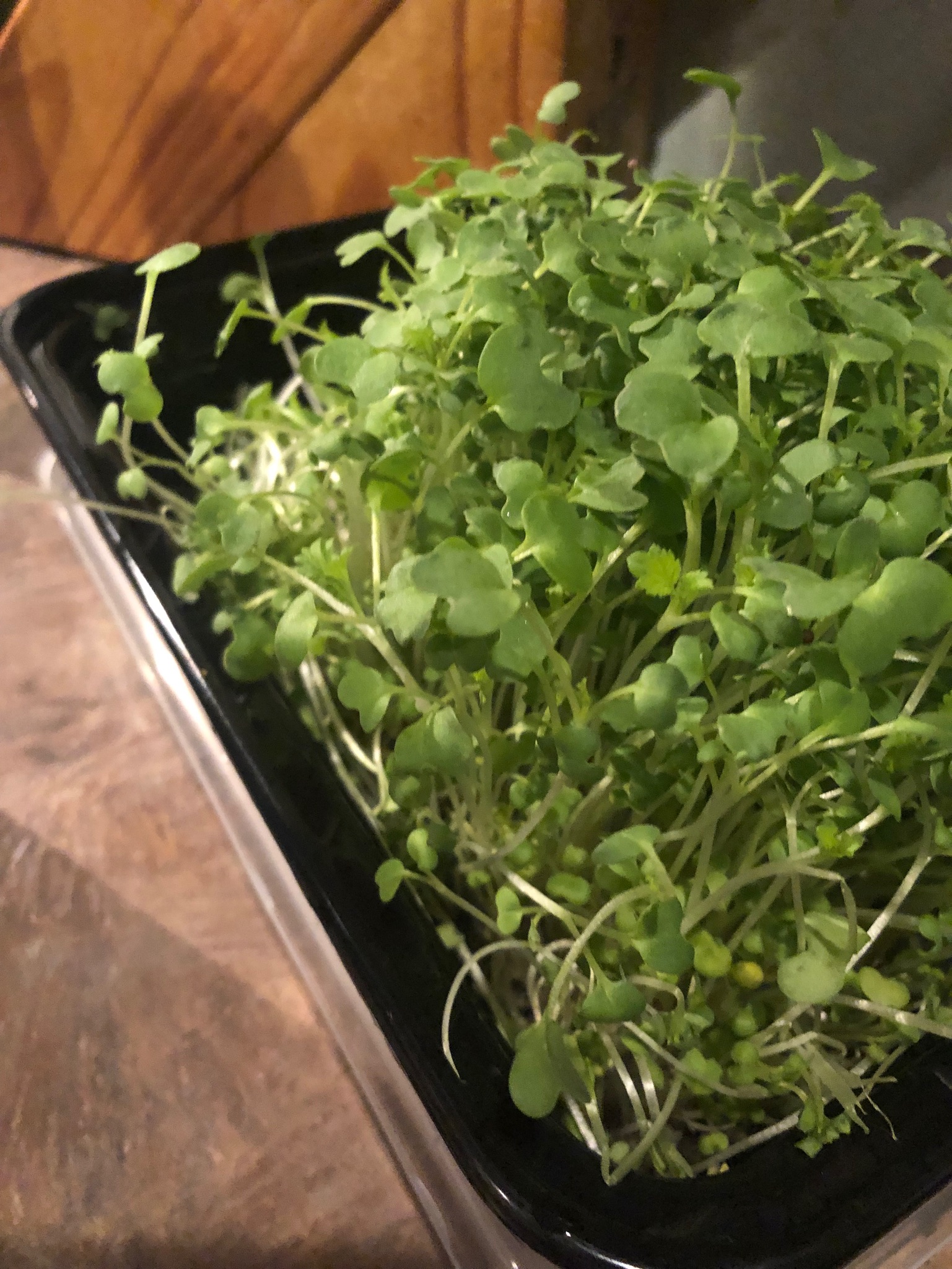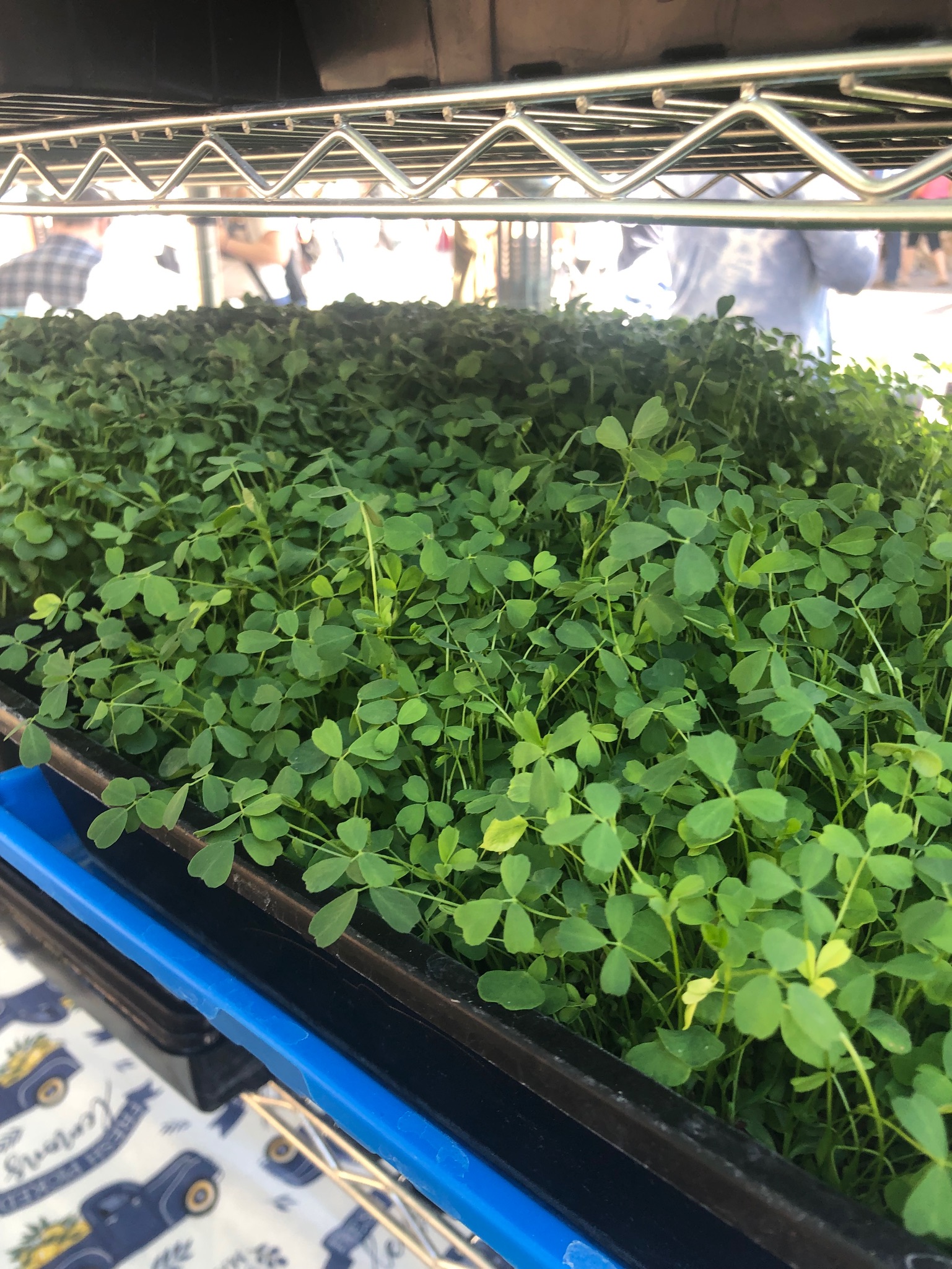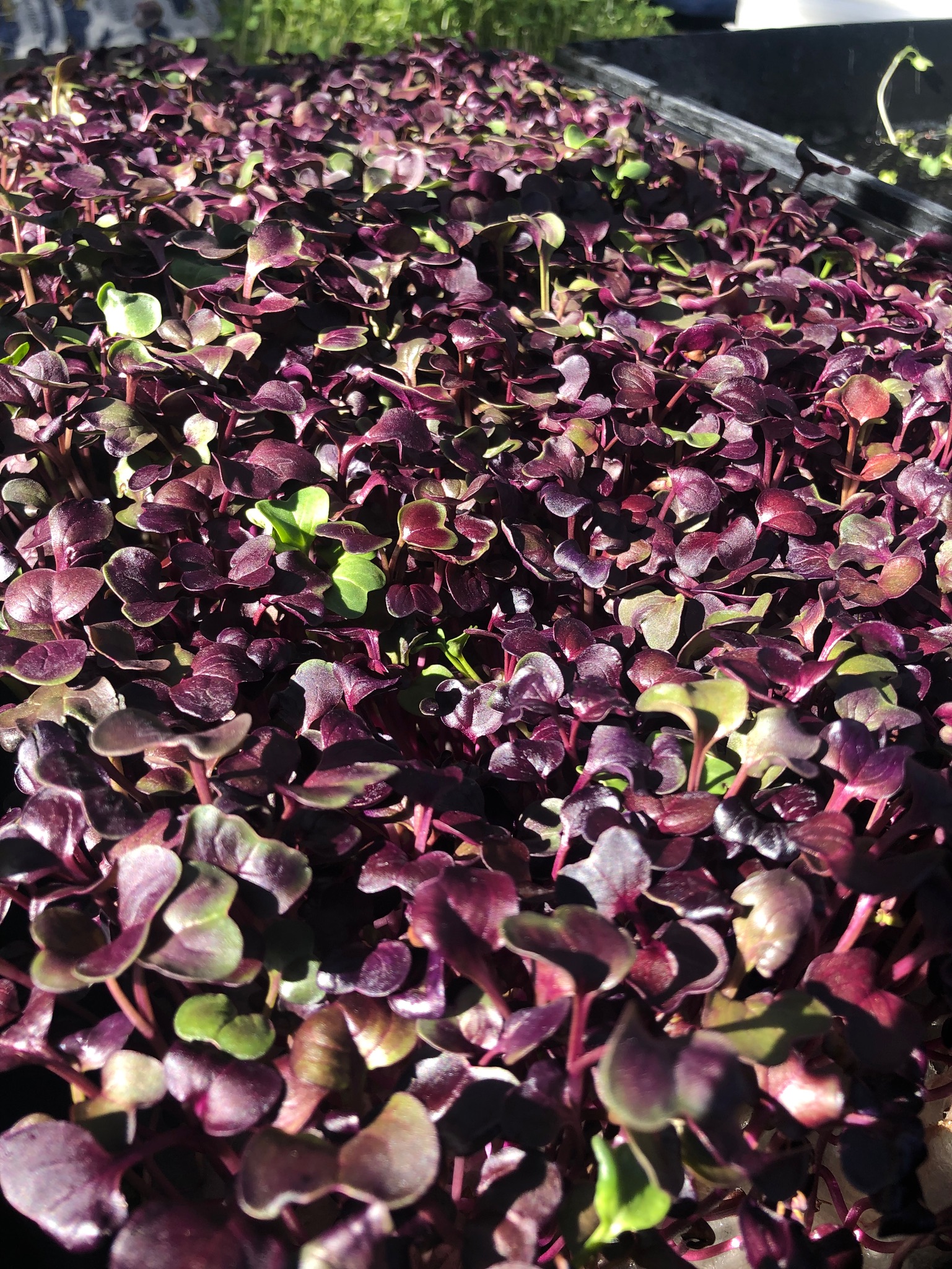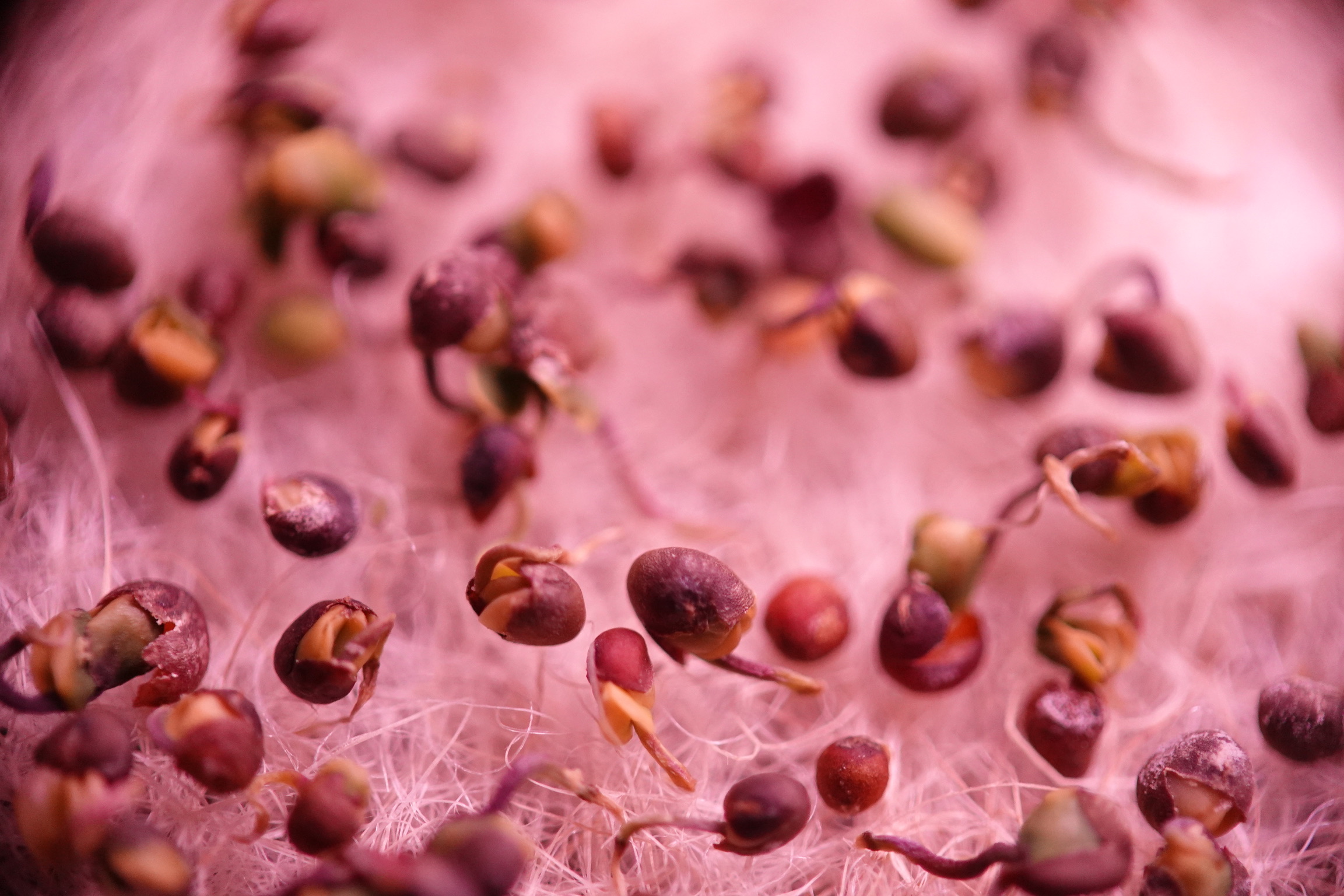Eating microgreens
Like all fresh produce, microgreens will eventually go bad. Storing and handling your microgreens properly will extend their life so that you can get the most out of them for longer.
Here are a few things you can do to make sure your microgreens are safe to eat.
Wash microgreens when preparing your meal, not anytime before.
Just like any fresh produce, microgreens should be washed before eating. However, microgreens are very fragile and washing too early can make the problem worse. It damages their tissue and introduces moisture that over time can increase bacteria growth and shorten their shelf life.


Eat microgreens no later than 3-5 days after harvest.
Storing and handling your microgreens properly will extend their life so that you can get the most out of them for longer.
Extend shelf life
Here are some factors that can affect the shelf life of your microgreens.

Temperature
At room temperature, microgreens go bad very quickly. Don’t expect microgreens cut from their roots to last more than a day or two outside of a refrigerator. If kept cool, cut microgreens’ shelf life can be extended by another day or two, depending on the species.

Atmosphere
Studies show that CO2 and O2 levels and water vapor pressure can affect the shelf life of fresh produce. However, it’s unlikely that you’ll be able to control the environment this way to preserve microgreens unless you have a science lab in your home.

Moisture
Microgreens should be kept dry. A moist environment is perfect for growing the bacteria that can cause foodborne illness. Yet another reason to wait to wash your microgreens until right before you eat them!

Tissue Damage
Microgreens are very delicate, and rough handling of microgreens can also harm the plant. Even the process of washing microgreens – which is recommended before eating – can be too rough and damage the plants, creating more opportunities for the microgreens to go bad. For this reason, you should only wash microgreens right before you eat them, not any sooner.

Cutting/Harvesting
The act of cutting microgreens is a significant stressor to the plants. Not only are they no longer absorbing water through the roots, but also cut microgreens are literally wounded plants. This creates opportunities for spoilage microbes to get into the plant tissue and cause the microgreens to go bad. If possible, avoid cutting microgreens until you’re ready to eat them.